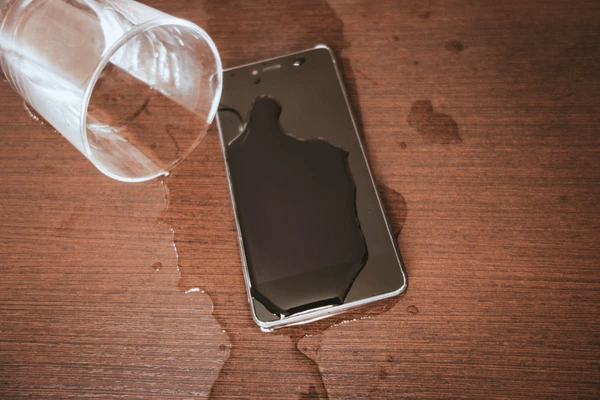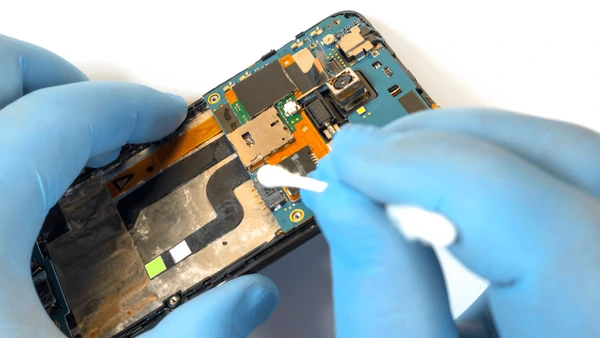
Learn what to do if the phone is water-damaged with expert-backed tips from an Authorised Mobile Service Centre. Discover safe, effective ways to dry, protect, and restore your device before it’s too late.
Few things cause more panic than seeing your phone slip into water — whether it’s the sink, the rain, or the dreaded bathroom mishap. But here’s the truth: acting calmly and correctly in those first few minutes can make the difference between saving and losing your device.
In this guide, you’ll learn practical, evidence-based steps to handle a water-damaged phone safely. We’ll also explore what not to do, when to seek professional help, and how to prevent such accidents in the future.
Understanding Water Damage
Water damage occurs when moisture enters the internal circuits of your device. Even a splash can trigger corrosion, short-circuiting, or oxidation if not addressed immediately.
Common signs your phone may be water-damaged:
- The screen starts flickering or showing dark spots
- Buttons stop responding or feel sticky
- The speaker produces muffled or no sound
- The charging port stops working
- The device overheats or restarts automatically
Even waterproof or water-resistant phones have limits. For instance, “IP68-rated” phones can resist water briefly — but not prolonged submersion, especially in salty or soapy environments.

Immediate Steps to Take When Your Phone Gets Wet
When your phone gets water-damaged, the right actions can prevent permanent internal failure. Here’s what you should do immediately:
1. Turn Off Your Phone
Power off your phone instantly. Keeping it on while it’s wet increases the risk of short-circuiting. Avoid pressing random buttons, as it might push the water deeper inside.
2. Remove Accessories and SIM Card
Detach everything — case, SIM card, memory card, and charger. This allows air to circulate and helps the phone dry faster.
3. Wipe It Gently
Use a soft, absorbent cloth or tissue to dab (not rub) the surface. Focus on removing visible moisture from the screen, ports, and buttons.
4. Avoid Using Heat Sources
Never use a hair dryer, microwave, or oven to dry your phone. Excessive heat can melt delicate components. Instead, leave it in a cool, dry place.
5. Use a Drying Agent
Place your phone in a ziplock bag filled with silica gel packets — the kind found in new shoe boxes. Silica absorbs moisture effectively. Avoid rice; it’s less efficient and can leave particles inside the phone.
6. Be Patient
Leave the phone untouched for at least 24 to 48 hours. Patience is crucial; rushing to power it on can cause irreversible damage.
What Not to Do After Water Damage
Many people unknowingly worsen the damage by following common myths. Here’s what you must avoid:
- ❌ Don’t shake the phone: It can spread the water inside.
- ❌ Don’t blow air into ports: This pushes water further into circuits.
- ❌ Don’t plug in the charger: Electricity and moisture are a dangerous combination.
- ❌ Don’t test too early: Powering on prematurely can short internal components.
Being cautious now can save you from expensive repairs later.
When to Seek Professional Help
Even if your phone seems fine after drying, internal corrosion may still progress slowly. That’s why getting it checked by a professional technician is essential.
Authorized repair experts use advanced tools such as:
- Ultrasonic cleaning machines – to remove corrosion safely
- Moisture detection scanners – to locate trapped humidity
- Component-level diagnostics – to test circuit integrity
If you own an iPhone or premium smartphone, getting it examined at an iPhone Authorised Service Centre in Kolkata ensures genuine parts, proper repair techniques, and warranty-safe service.

How Professionals Handle Water-Damaged Phones
Professional technicians follow a structured process to restore phones:
- Disassembly: The device is carefully opened to inspect each layer.
- Drying Chamber: Moisture is removed under controlled temperature and humidity.
- Cleaning: Internal parts are cleaned using ultrasonic waves or specialized solvents.
- Testing: All components are tested for voltage stability, audio clarity, and camera function.
- Replacement (if needed): Damaged chips or circuits are replaced with genuine parts.
This process ensures your phone is revived safely without risking future malfunctions.
Preventing Future Water Damage
Water accidents can happen anytime — but prevention is easier than repair. Follow these tips to protect your device:
- ✅ Use a waterproof phone case if you often travel or work outdoors.
- ✅ Keep your phone away from sinks or bathrooms — even brief exposure to steam can harm sensors.
- ✅ Avoid charging near liquids.
- ✅ Regularly clean ports to prevent dust and moisture buildup.
- ✅ Backup your data frequently to avoid data loss from sudden damage.
The Science Behind Water and Electronics
Why exactly does water damage electronics so quickly?
- Water conducts electricity, creating unintended current paths.
- Impurities (like salts or soap) accelerate corrosion.
- Battery reaction: When exposed to moisture, lithium-ion batteries can short out, swell, or even leak.
That’s why even a few drops can create invisible, long-term harm that surfaces weeks later.
Myths About Water-Damaged Phones
Let’s clear up a few popular misconceptions:
| Myth | Truth |
|---|---|
| “Put your phone in rice.” | Rice is a weak desiccant and can introduce dust. Use silica gel instead. |
| “It’s fine if it works after drying.” | Internal corrosion might continue damaging circuits over time. |
| “A waterproof phone can’t be damaged by water.” | Water-resistant ≠ waterproof; seals wear out over time. |
Understanding these facts helps you act more wisely in emergencies.
Common Devices Most at Risk
Phones aren’t the only devices vulnerable to water damage.
You should be cautious with:
- Smartwatches and earbuds — smaller devices absorb moisture quickly.
- Laptops and tablets — even a small spill can ruin the motherboard.
- Charging cables and adapters — moisture exposure can cause electric shocks.
Handle all electronic devices near water with care, and keep microfiber cloths handy.

FAQs
1. Can I still save my phone if it was underwater for a long time?
It depends on the duration and the liquid type. Freshwater exposure is less harmful than saltwater. However, prolonged submersion often requires professional intervention.
2. Does insurance cover water damage?
Some warranties or insurance plans cover accidental liquid damage. Check your provider’s policy.
3. Is it safe to dry a phone under sunlight?
Indirect sunlight for a few minutes may help, but prolonged exposure can overheat your device.
4. Should I use a hairdryer on the phone?
No. Hairdryers can push moisture deeper and cause heat damage.
5. How do I know if my phone is fully dry?
If there’s no moisture in ports, no flickering screen, and full functionality after professional inspection, it’s safe to use.
Dry Hands, Calm Mind, Safe Phone
Water damage doesn’t always mean disaster — it’s about how quickly and correctly you respond. Acting calmly, following preventive steps, and seeking timely expert help can make a huge difference.
The next time your phone meets water, remember: your first actions matter more than the accident itself. With awareness, patience, and a touch of expert care, even a soaked smartphone can get a second chance.







